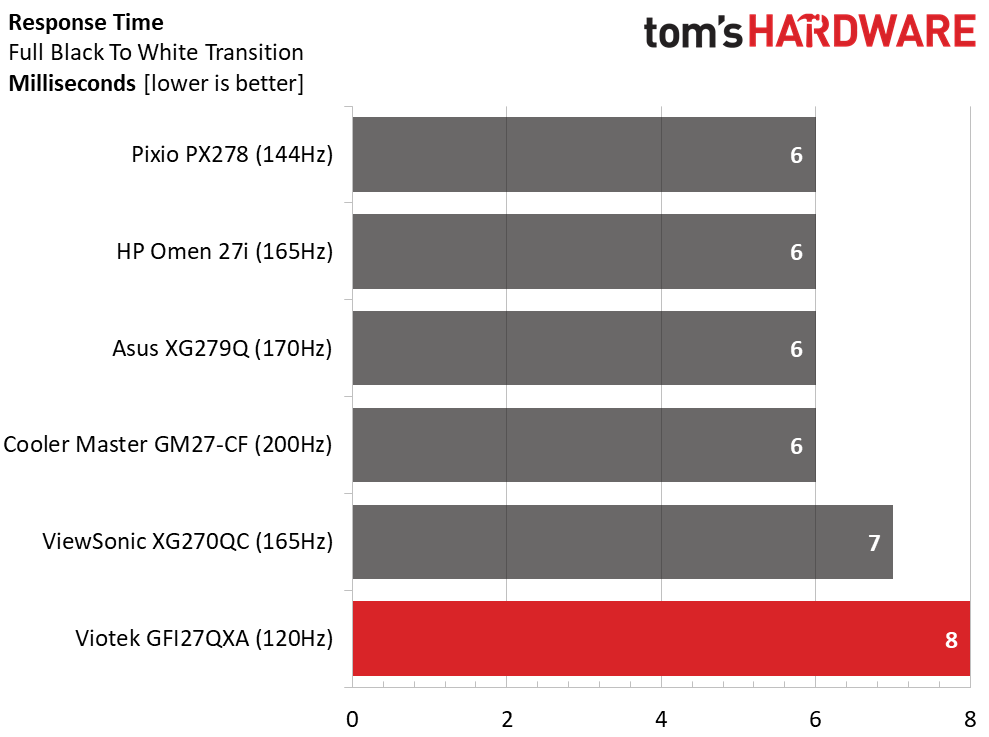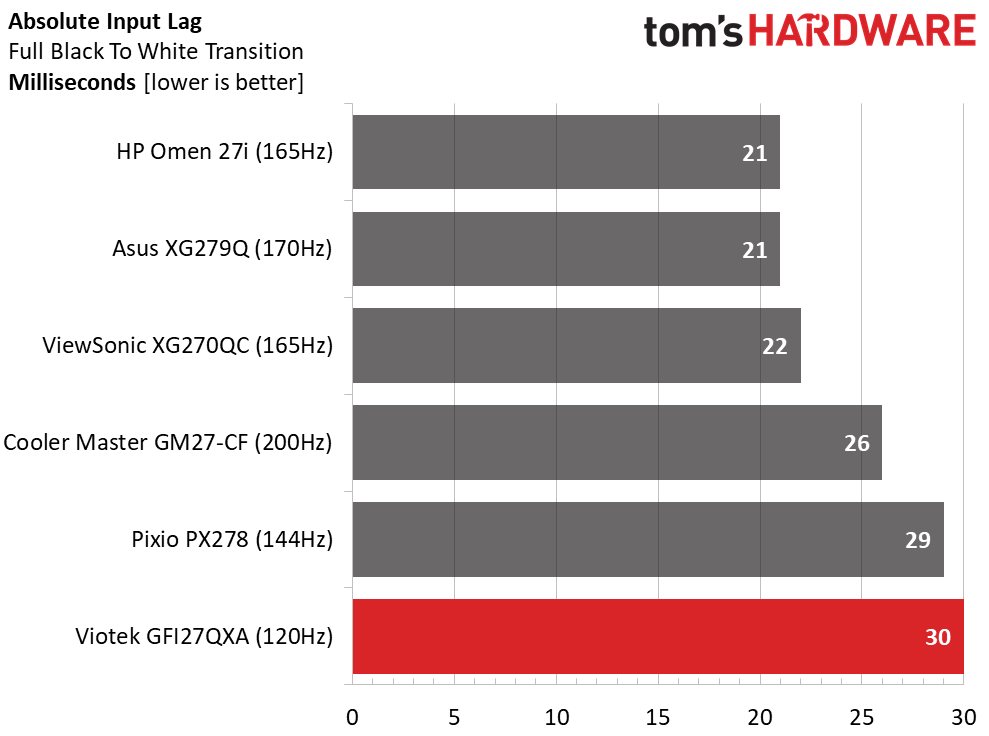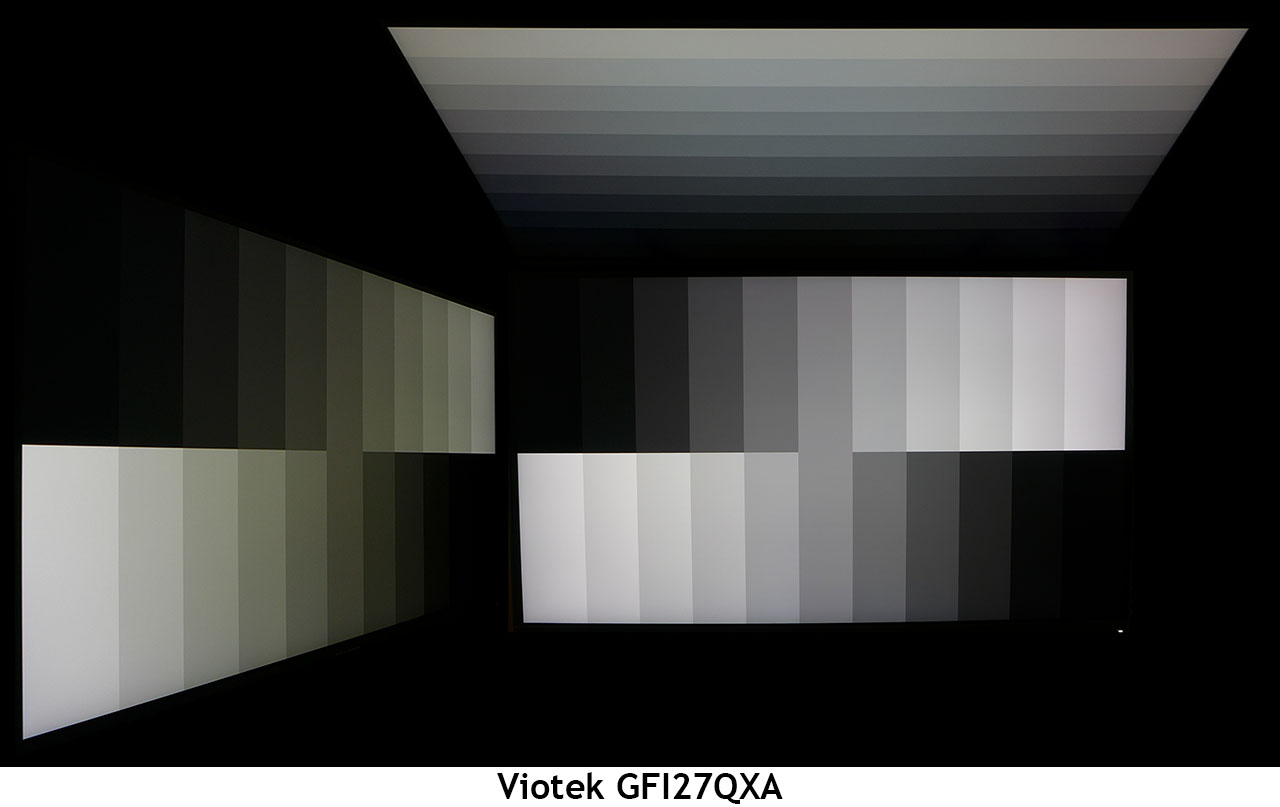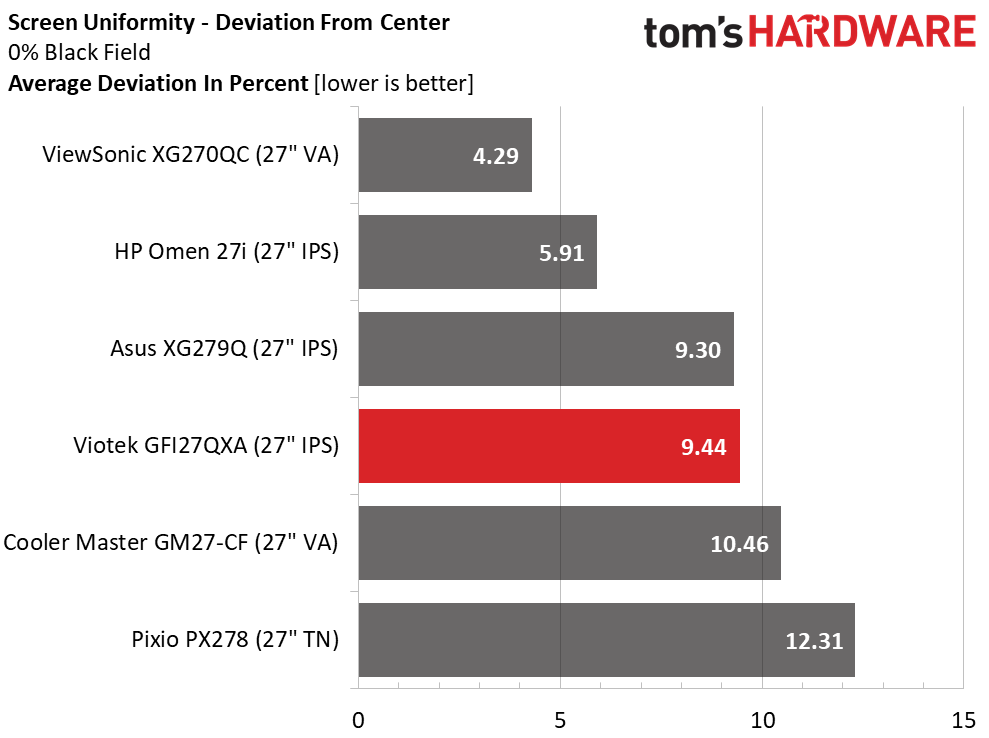Why you can trust Tom's Hardware
Viewing Angles
The GFI27QXA’s IPS panel performs well in our viewing angle test. At 45 degrees to the sides, there is a visible green shift, but brightness is only down about 10%. Detail stays solid with almost no change in gamma. The top view is less impressive with a 50% output reduction, blue tint and a loss of detail. Overall, this is some of the best off-axis image quality we’ve seen to date.
Screen Uniformity
To learn how we measure screen uniformity, please click here.
The measurements show that our GFI27QXA sample offered good screen uniformity. There is no apparent bleed or glow and the meter shows just one slight hotspot in the lower right corner. Field patterns look smooth in both brightness and color at every brightness step.
Pixel Response and Input Lag
Click here to read up on our pixel response and input lag testing procedures.


Because you can’t run adaptive sync at 144Hz, we performed our tests at 120Hz. Unless you have a robust graphics board, you can expect frame rates between 60 and 80fps in most games. This means adaptive sync is a necessity. The GFI27QXA is just a tad slower than its QHD competitors. An 8 ms screen draw means minimal motion blur. Overdrive works well to mitigate that. The overall input lag of 30ms is also reasonable. Skilled players may prefer the faster response of one of the QHD screens, but most gamers will be satisfied with the Viotek’s performance.
Get Tom's Hardware's best news and in-depth reviews, straight to your inbox.
Current page: Viewing Angles, Uniformity, Response and Lag
Prev Page HDR Performance Next Page Conclusion
Christian Eberle is a Contributing Editor for Tom's Hardware US. He's a veteran reviewer of A/V equipment, specializing in monitors. Christian began his obsession with tech when he built his first PC in 1991, a 286 running DOS 3.0 at a blazing 12MHz. In 2006, he undertook training from the Imaging Science Foundation in video calibration and testing and thus started a passion for precise imaging that persists to this day. He is also a professional musician with a degree from the New England Conservatory as a classical bassoonist which he used to good effect as a performer with the West Point Army Band from 1987 to 2013. He enjoys watching movies and listening to high-end audio in his custom-built home theater and can be seen riding trails near his home on a race-ready ICE VTX recumbent trike. Christian enjoys the endless summer in Florida where he lives with his wife and Chihuahua and plays with orchestras around the state.

